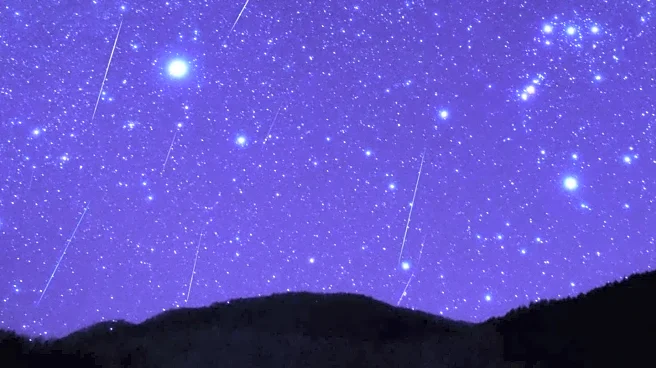What's Happening?
The Geminid meteor shower, one of the most anticipated astronomical events of the year, is set to peak over New York State on the nights of December 13 and 14. This meteor shower, which originates from
the debris of the asteroid 3200 Phaethon, is expected to produce around 150 meteors per hour. Unlike many other meteor showers that are the result of comet debris, the Geminids are unique because they are asteroid-based. The meteors will appear as white or yellowish streaks in the sky, emanating from the direction of the constellation Gemini. This event follows a series of other notable astronomical occurrences, including a supermoon and the Orionids meteor shower.
Why It's Important?
The Geminid meteor shower is significant not only for its intensity but also for its unique origin. As one of the few meteor showers caused by an asteroid, it provides a rare opportunity for both amateur and professional astronomers to study asteroid debris. The event is expected to draw significant public interest, encouraging people to engage with astronomy and potentially inspiring future scientific pursuits. Additionally, the shower's visibility across New York State offers an accessible way for residents to experience a major celestial event, fostering a greater appreciation for space and science.
What's Next?
As the peak of the Geminid meteor shower approaches, observatories and astronomy clubs across New York are likely to host viewing events to maximize public engagement. These gatherings provide educational opportunities and foster community interest in astronomy. Following the Geminids, other meteor showers and celestial events will continue to capture public attention, maintaining interest in astronomical phenomena. The ongoing observation of such events contributes to a broader understanding of our solar system and the various celestial bodies within it.













